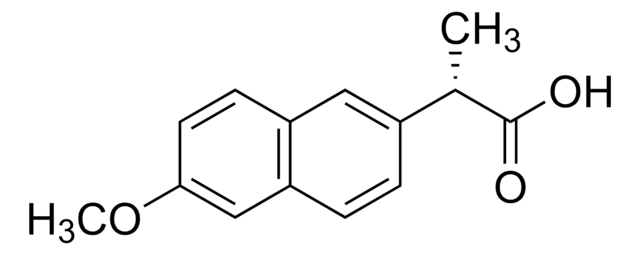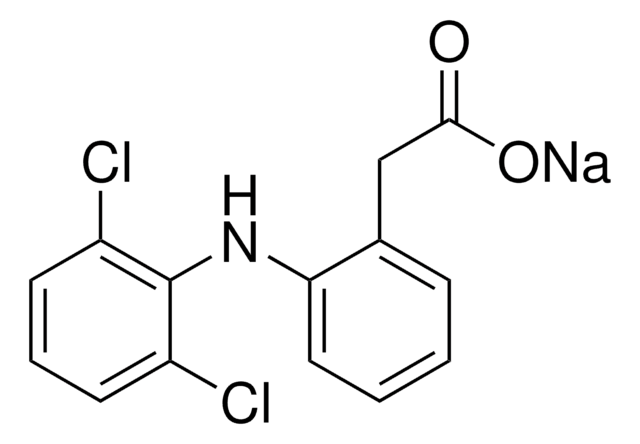I4883
Ibuprofen
≥98% (GC), powder, COX inhibitor
Synonym(s):
2-(4-Isobutylphenyl)propanoic acid, Brufen, Motrin, Rebugen, α-Methyl-4-(isobutyl)phenylacetic acid, (±)-2-(4-Isobutylphenyl)propanoic acid
About This Item
Recommended Products
Product Name
Ibuprofen, ≥98% (GC)
biological source
synthetic (organic)
Assay
≥98% (GC)
form
powder
mp
77-78 °C
solubility
ethanol: 50 mg/mL, clear, colorless to faintly yellow
SMILES string
CC(C)Cc1ccc(cc1)C(C)C(O)=O
InChI
1S/C13H18O2/c1-9(2)8-11-4-6-12(7-5-11)10(3)13(14)15/h4-7,9-10H,8H2,1-3H3,(H,14,15)
InChI key
HEFNNWSXXWATRW-UHFFFAOYSA-N
Gene Information
human ... ALB(213) , ALOX5(240) , CYP1A2(1544) , CYP2C9(1559) , IL8RA(3577) , PTGS1(5742) , PTGS2(5743)
mouse ... Alox5(11689)
rat ... Alox5(25290) , Ptgs1(24693)
Looking for similar products? Visit Product Comparison Guide
General description
Application
- to study its vascular and pulmonary effects on neonatal lung development
- to study its effects on cell apoptosis, cell proliferation, and histology changes in human cholangiocarcinoma cell lines
- in the preparation of a terpene-based therapeutic deep eutectic system (THEDES) to investigate its physicochemical, antimicrobial, and anticancer properties
Biochem/physiol Actions
Signal Word
Warning
Hazard Statements
Precautionary Statements
Hazard Classifications
Acute Tox. 4 Oral - Eye Irrit. 2 - STOT SE 3
Target Organs
Respiratory system
Storage Class Code
11 - Combustible Solids
WGK
WGK 1
Flash Point(F)
Not applicable
Flash Point(C)
Not applicable
Personal Protective Equipment
Choose from one of the most recent versions:
Already Own This Product?
Find documentation for the products that you have recently purchased in the Document Library.
Customers Also Viewed
Our team of scientists has experience in all areas of research including Life Science, Material Science, Chemical Synthesis, Chromatography, Analytical and many others.
Contact Technical Service










